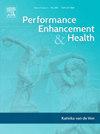Use of glucagon-like peptide 1 (GLP-1) agonists among exercisers and recreational athletes and associated mental health symptoms
IF 3.7
Q2 HOSPITALITY, LEISURE, SPORT & TOURISM
引用次数: 0
Abstract
Objectives
The present study assessed the self-reported use of Glucagon-like Peptide 1 (GLP-1) agonists and associated health risk awareness and mental health symptoms among UK-based exercisers and recreational athletes.
Methods
Participants (n = 681) completed an online survey which assessed: (1) participation in exercise and sport; (2) past and intended future off-label use of GLP-1 agonists; and (3) awareness of associated health risks, body image disturbances, and symptoms of anxiety and depression.
Results
Over half of participants (57.9 %, n = 372) were familiar with GLP-1 agonists. Of these, 78.2 %, (n = 291) reported that they were unaware of any associated health risks. A quarter (25.5 %, n = 93) of participants had thought about using GLP-1 agonists off-label for physical appearance purposes, and 2.9 % (n = 11) reported having already used GLP-1 agonists. GLP-1 agonists were mainly sourced through online outlets (45.5 %, n = 5) or private sellers (18.2 %, n = 2), and 50.0 % (n = 5) of the users continued taking GLP-1 drugs even after perceiving they experienced adverse symptoms. The majority of users (63.6 %, n = 7) had followed more than one course of GLP-1 agonists, Semaglutide being the most commonly used GLP-1 agonist (54.5 %, n = 6), and 90.9 % (n = 10) of users believed they had bought the genuine product. Compared to non-users, participants who had used or thought about using GLP-1 agonists, reported significantly higher scores in symptoms of anxiety and depression, and in body image disturbances.
Conclusion
A sizeable proportion of exercisers and recreational athletes contemplated GLP-1 agonist use for body image enhancement purposes, despite being unaware of associated health risks and experiencing elevated mental health symptoms in comparison to non-contemplators.
在锻炼者和休闲运动员中使用胰高血糖素样肽1 (GLP-1)激动剂及其相关的心理健康症状
目的本研究评估英国锻锻者和休闲运动员中自我报告的胰高血糖素样肽1 (GLP-1)激动剂的使用情况以及相关的健康风险意识和心理健康症状。方法参与者(n = 681)完成一项在线调查,评估:(1)参与锻炼和体育运动;(2) GLP-1激动剂过去和未来的说明书外使用;(3)对相关健康风险、身体形象障碍以及焦虑和抑郁症状的认识。结果超过一半的参与者(57.9%,n = 372)熟悉GLP-1激动剂。其中,78.2% (n = 291)的人报告说他们不知道任何相关的健康风险。四分之一(25.5%,n = 93)的参与者考虑过使用GLP-1激动剂以达到外观目的,2.9% (n = 11)的参与者报告已经使用了GLP-1激动剂。GLP-1激动剂主要通过网络渠道(45.5%,n = 5)或私人卖家(18.2%,n = 2)获得,50.0% (n = 5)的使用者在感觉出现不良症状后仍继续服用GLP-1药物。大多数使用者(63.6%,n = 7)服用了一个以上的GLP-1激动剂疗程,Semaglutide是最常用的GLP-1激动剂(54.5%,n = 6), 90.9% (n = 10)的使用者认为他们购买的是正品。与未使用GLP-1激动剂的参与者相比,使用或考虑使用GLP-1激动剂的参与者在焦虑和抑郁症状以及身体形象障碍方面的得分明显更高。结论:相当大比例的锻炼者和休闲运动员考虑使用GLP-1激动剂来增强身体形象,尽管与非锻炼者相比,他们没有意识到相关的健康风险,并且经历了更高的心理健康症状。
本文章由计算机程序翻译,如有差异,请以英文原文为准。
求助全文
约1分钟内获得全文
求助全文
来源期刊

Performance enhancement and health
Social Sciences-Health (social science)
CiteScore
4.70
自引率
0.00%
发文量
27
审稿时长
57 days
 求助内容:
求助内容: 应助结果提醒方式:
应助结果提醒方式:


